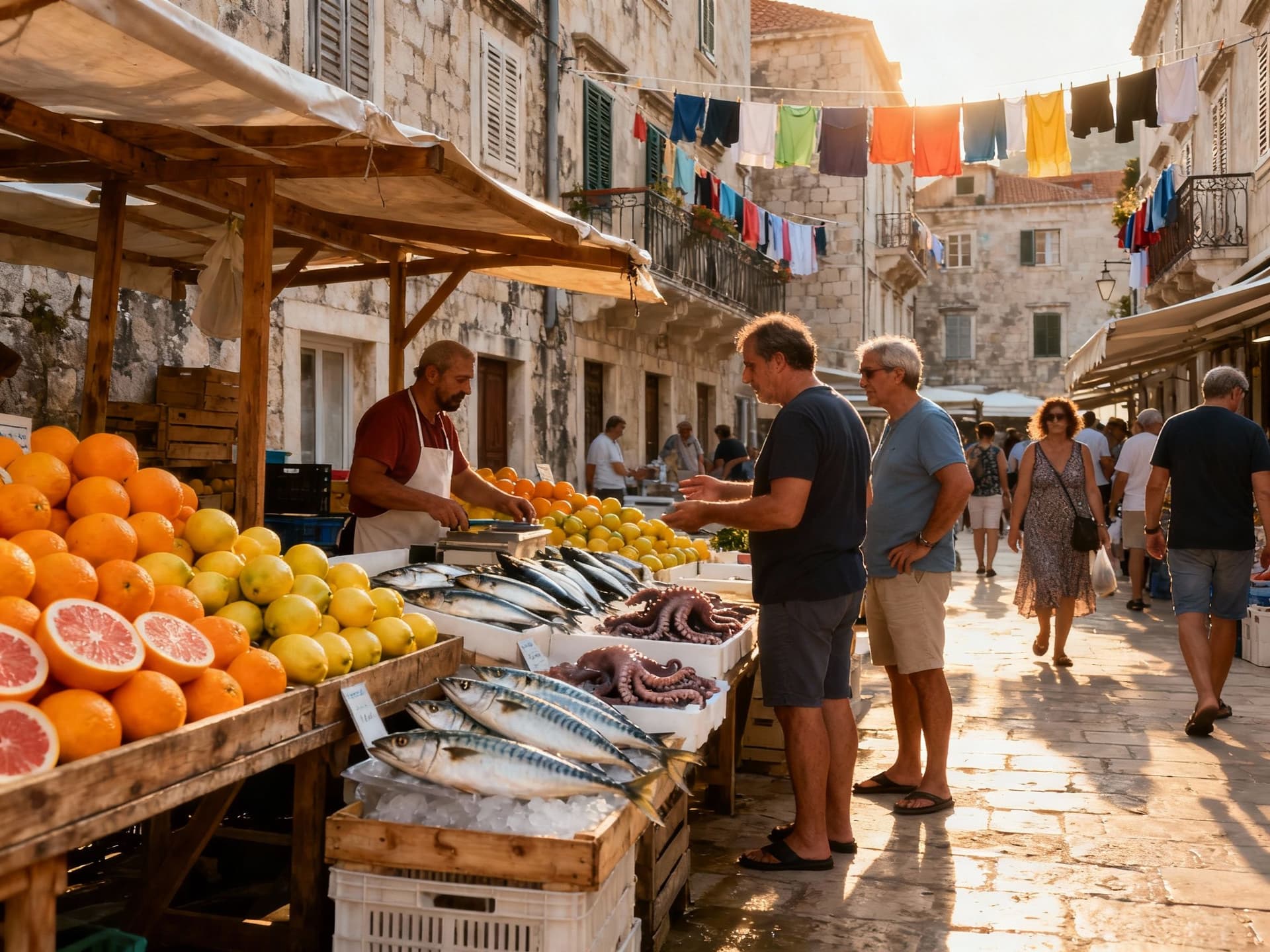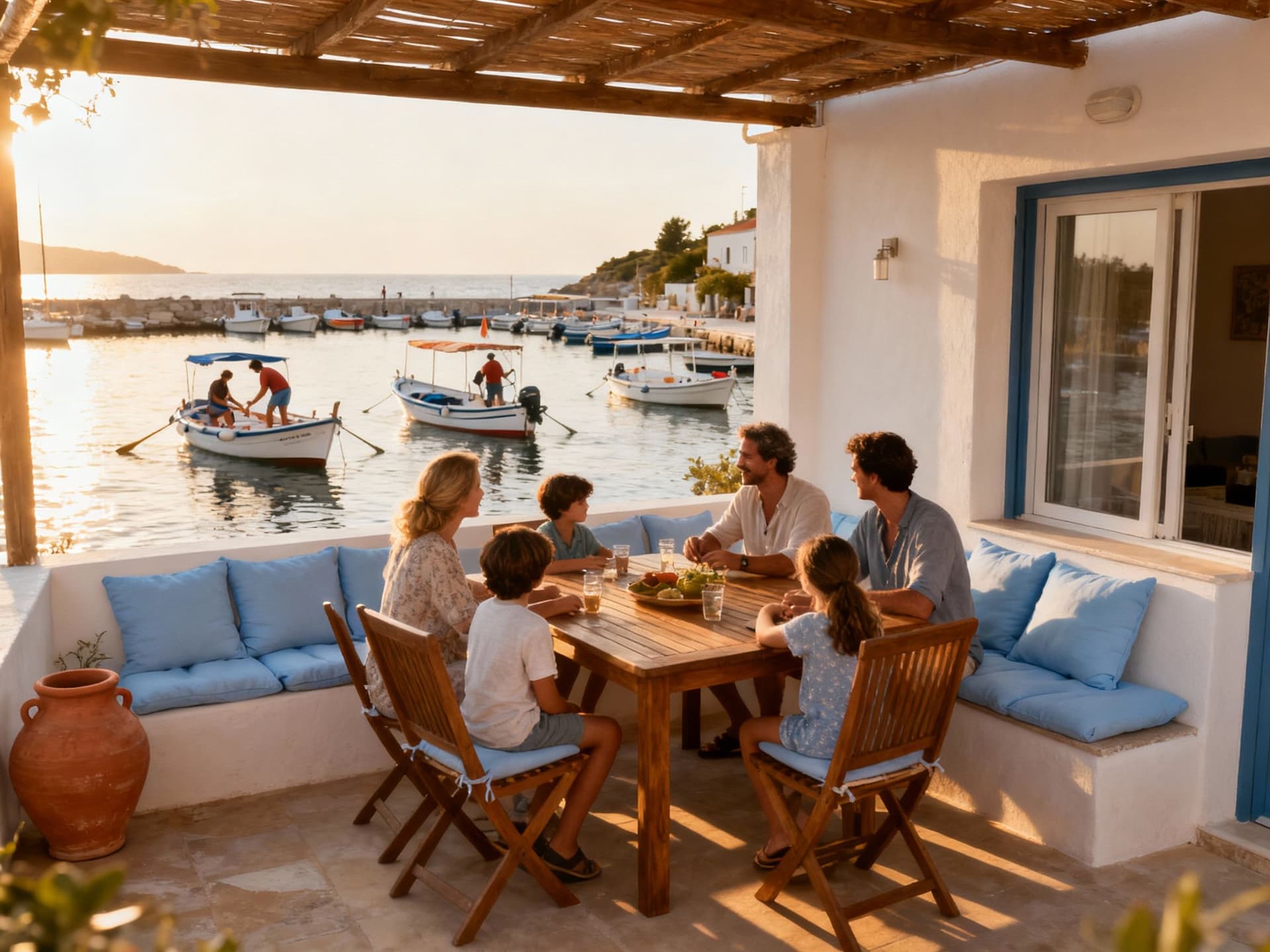Croatia: Match the Romance to the Risk
Croatia’s coastal romance masks new tax and short‑let rules; match lifestyle choices to blended yield scenarios and municipal risk to protect returns.
Imagine walking a stony street in Split at 9 a.m.: espresso steam, a fishmonger shouting the morning catch, terrace chairs being flipped upright. Croatia is visceral — sun-salted coastlines, ancient stone quarters, and inland towns where life follows market hours. Those sensory draws power demand, but the investment story changed materially in 2024–25: price inflation, new property taxes and short‑let rules are rewriting risk. If you love the lifestyle, you must also map how regulatory shifts and seasonality alter cash flow and downside exposure.
Living the Croatia lifestyle

Croatia alternates between coastal intensity and inland calm. Along the Adriatic — Dubrovnik, Hvar, Rovinj, Split — summer is a concentrated economic pulse: restaurants, boat traffic and short‑term lets dominate. Inland and in Zagreb the rhythm is year‑round: weekly markets, cafés, tram commutes and a quieter rental market that supports more stable long‑term yields. For buyers this dual personality means choosing between seasonal upside and steady, year‑round cash flow.
Coastal character: Old Towns and waterfront life
Picture Dubrovnik’s Old Town — narrow limestone alleys and tourism-driven commerce — versus Split’s Veli Varos, where locals and visitors share the Riva. These locations command premiums: prime waterfront prices can be two to three times national averages. That premium buys strong seasonal rental revenue but also concentrated regulatory risk as municipalities cap short lets to protect residents. Investors must price in vacancy and compliance costs, not just summer occupancy.
Urban rhythm: Zagreb and year‑round stability
Zagreb’s market behaves more like a continental European city: steady demand from professionals, students and public sector workers supports longer leases and lower seasonality. National house price indices showed double‑digit annual increases in 2024 and early 2025, but growth concentrated in new‑build segments and inland towns where supply is tighter. For income investors, Zagreb-style assets often offer lower headline yields but less volatility across the calendar year.
- Lifestyle highlights and location-specific cues
- Split — morning market at Pazar, good short‑let demand but municipal restrictions emerging; price premiums on sea‑view apartments.
- Dubrovnik Old Town — exceptional tourist pricing, intense regulation to restore resident populations; high capital but high regulatory sensitivity.
- Zagreb — steady occupational demand, student housing hotspots, more resilient yields across seasons.
Making the move: practical considerations

Lifestyle comes first in your imagination; the numbers come next in reality. From late 2024 Croatia introduced measures aimed at reducing short‑let pressure and taxing property more directly — moves that materially change yield maths for coastal holiday lets. Translate those national policies into municipal practice: Dubrovnik and some Dalmatian towns enacted bans or moratoria, while inland towns encourage long‑term rentals. Assess both levels before pricing expected returns.
Property styles and real yield tradeoffs
Stone restorations, modern new builds and traditional Dalmatian houses each attract different tenants and cost profiles. Restorations in Old Towns yield high nightly rates but require higher capex and face stricter heritage rules. New builds in Zagreb attract long‑term tenants with lower maintenance overhead and steadier occupancy. Use price per square metre and realistic occupancy scenarios to calculate two yields: summer peak yield and blended annual net yield.
Work with experts who understand both life and law
Hire an agent or lawyer who pairs lifestyle sensitivity with regulatory fluency. You need someone who knows local neighbour‑consent rules, tourist registration (eVisitor), and municipal moratoria — plus a network of property managers for off‑season occupancy. Agencies that only stage properties for summer viewings miss the year‑round operational planning investors require.
- Step-by-step checklist for risk‑adjusted buying
- 1) Run two cash‑flow scenarios: pure short‑let (summer concentration) and blended annual (60–70% long‑let). Use conservative occupancy assumptions: 40–60% for small coastal units when regulation tightens.
- 2) Model new property taxes and tourist levies: include annual property tax per m² (0.6–8.0 EUR/m² range reported) and higher short‑let tax brackets where applicable.
- 3) Confirm municipal stance on new tourist licences and 80% neighbour consent rules for condominium short‑lets before offer.
Insider knowledge: what expats wish they'd known
Expats will tell you the same paradox: Croatia’s coast gives a brilliant lifestyle but also regulatory and seasonality headaches. Owners who relied only on July–August returns found themselves exposed when municipal rules cut new short‑let supply or when off‑season occupancy collapsed. The best buyers paired a lifestyle area with an asset type that works year‑round or positioned multiple units in different regulatory environments to diversify operational risk.
Cultural and community considerations
Learn local routines: Sunday market days, café culture on Narodni trg in Split, and summer island ferry timetables that shape tenant behaviour. Language is useful but not mandatory in tourist towns; in Zagreb, local ties and Croatian language skills make landlord‑tenant relationships smoother. Respect for neighbour norms is also part of risk management — condo boards control access to tourist licences in many places.
How lifestyle changes over time — and what that means for your asset
Croatia is moving from seasonal tourism toward longer seasons and inland growth supported by events and city tourism. That trend reduces seasonality risk over a multi‑year hold but raises entry prices now. Expect capital appreciation in well‑connected towns, but also plan for short‑term regulatory shocks. Hold horizons of five to ten years to allow guest‑profile shifts and municipal policy adjustments to play out.
- Red flags local buyers should watch
- Municipal moratoria or active bans on new tourist licences (common in Dubrovnik and some Dalmatian towns).
- Unclear condominium rules requiring neighbour consent for short lets (new laws raised this threshold in 2025).
- Relying solely on high summer occupancy without a tested off‑season plan.
Conclusion: Croatia rewards both imagination and rigor. Fall in love with the market first — the island cafés, the winter olive harvest, Zagreb’s concert season — but commit to data: price per m², two‑scenario cash flows, municipal compliance and a five‑year stress test that factors tax changes and vacancy. Work with agents who understand municipal nuance and local property managers who can keep units rented outside high season. If you do both, Croatia can be a lifestyle purchase that also meets disciplined investment criteria.
Norwegian market analyst who relocated from Oslo to Mallorca in 2016, guiding Northern buyers through regulatory risk, currency hedging, and rentability.


